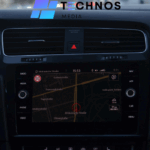Smart devices have moved from novelty to necessity. Whether it’s a smartwatch tracking your health, a virtual assistant controlling your home, or a smartphone helping you navigate the world, these tools are seamlessly woven into our everyday routines. But behind the sleek design and user-friendly interfaces are powerful technologies quietly working in unison.
Understanding the core technologies in smart devices offers a clearer picture of how far innovation has come—and where it’s headed. In this article, we’ll explore these essential technologies, breaking down their functions, impact, and role in shaping the digital experiences of today.
1. The Microprocessors and Microcontrollers: The Brains of Smart Devices
Every smart device—from fitness trackers to home thermostats—relies on processing units to function. Microprocessors and microcontrollers serve as the device’s brain, executing commands, processing data, and controlling input/output operations.
Microprocessors are found in more complex devices like smartphones and tablets. These chips handle multitasking and run high-level operating systems. Microcontrollers, on the other hand, are used in simpler smart devices like smart lights or door sensors. They are designed for specific control tasks with real-time operations.
With newer generations of processors like Apple’s M-series chips and Qualcomm’s Snapdragon platforms, devices are becoming faster, more energy-efficient, and capable of running AI applications directly on the device.
2. Connectivity Technologies: The Threads That Link Devices Together
One of the defining features of smart devices is their ability to communicate. Various connectivity protocols enable this, including:
-
Wi-Fi: Allows high-speed internet access, commonly used in home devices like smart TVs or speakers.
-
Bluetooth: Ideal for short-range communication between personal devices such as earbuds, watches, and fitness bands.
-
Zigbee/Z-Wave: Preferred in smart home ecosystems for their low-power, mesh-networking capabilities.
-
5G: Offers lightning-fast mobile data speeds, low latency, and massive connectivity—key for smart cities, autonomous vehicles, and mobile devices.
These technologies create an invisible web of communication, allowing devices to share data, receive updates, and perform actions remotely.
3. Sensors and Actuators: Bringing Awareness to Devices
Without sensors, smart devices would be blind to the world around them. Sensors collect real-time data from the environment, while actuators respond to that data with physical actions. Together, they enable intelligent interaction.
-
Motion sensors detect movement for lights or security systems.
-
Accelerometers and gyroscopes track orientation and motion in phones and wearables.
-
Temperature and humidity sensors monitor indoor climates.
-
Heart rate and SpO2 sensors in fitness trackers help monitor health metrics.
Actuators then act on this information—adjusting light brightness, controlling HVAC systems, or sending alerts. This dynamic interaction is the foundation of automation and responsiveness in modern smart devices.
4. Artificial Intelligence and Machine Learning: The Intelligence Layer
Smart devices have evolved from being reactive to proactive, thanks to artificial intelligence (AI) and machine learning (ML). AI enables devices to learn user behavior, predict needs, and automate tasks without constant human input.
-
Smart assistants like Alexa, Siri, or Google Assistant use AI to understand natural language and carry out voice commands.
-
Smart thermostats learn your schedule and preferences to optimize energy use.
-
AI cameras in phones adjust settings automatically to enhance image quality.
-
Machine learning algorithms in wearables detect irregular health patterns for early warnings.
This intelligence layer personalizes the experience, reduces effort, and increases overall efficiency.
5. Edge Computing: Processing Power at the Source
As data volumes grow, sending everything to the cloud for processing creates latency issues. That’s where edge computing comes in—bringing data processing closer to the source (the device itself).
Edge computing reduces response time and bandwidth usage. For example:
-
A smart security camera using edge computing can detect intruders and send alerts without needing cloud verification.
-
Voice assistants can process simple commands locally, improving response speed and user privacy.
This local processing makes devices faster, more reliable, and better suited for real-time decision-making.
6. Power Management and Battery Innovations
One of the key challenges for smart devices is power consumption. With increasing functionality, efficient power use has become essential.
Modern batteries, especially lithium-polymer and solid-state versions, offer higher energy densities. At the same time, new technologies in power management ICs (PMICs) ensure optimal energy usage across the device.
Advanced power-saving features—like adaptive brightness, sleep modes, and AI-based task scheduling—help extend battery life in devices ranging from wearables to laptops. Wireless charging and fast-charging protocols also make using and maintaining smart devices more convenient than ever.
7. User Interface Technologies: Seamless Human-Device Interaction
The ease with which users interact with smart devices plays a big role in their popularity. UI/UX design, haptic feedback, voice interfaces, and gesture controls are all part of this experience.
-
Touchscreens have become more responsive and accurate.
-
Voice interfaces powered by Natural Language Processing (NLP) make hands-free interaction possible.
-
Haptic feedback provides tactile confirmation, especially useful in wearables and gaming devices.
-
AR/VR interfaces are emerging in devices like smart glasses and immersive headsets, redefining digital interaction.
These technologies work together to create intuitive, seamless experiences that require minimal learning curves for users.
Conclusion
Smart devices have transformed the way we work, play, and connect. While their sleek interfaces and helpful features grab attention, the real magic lies beneath the surface—in the sophisticated technologies enabling intelligence, responsiveness, and connectivity.
From microprocessors and sensors to cloud computing and AI, each element plays a crucial role in shaping the modern digital experience. As innovation accelerates, these core technologies will continue to evolve, unlocking even greater potential and redefining how we interact with the world.
This post was created with our nice and easy submission form. Create your post!





